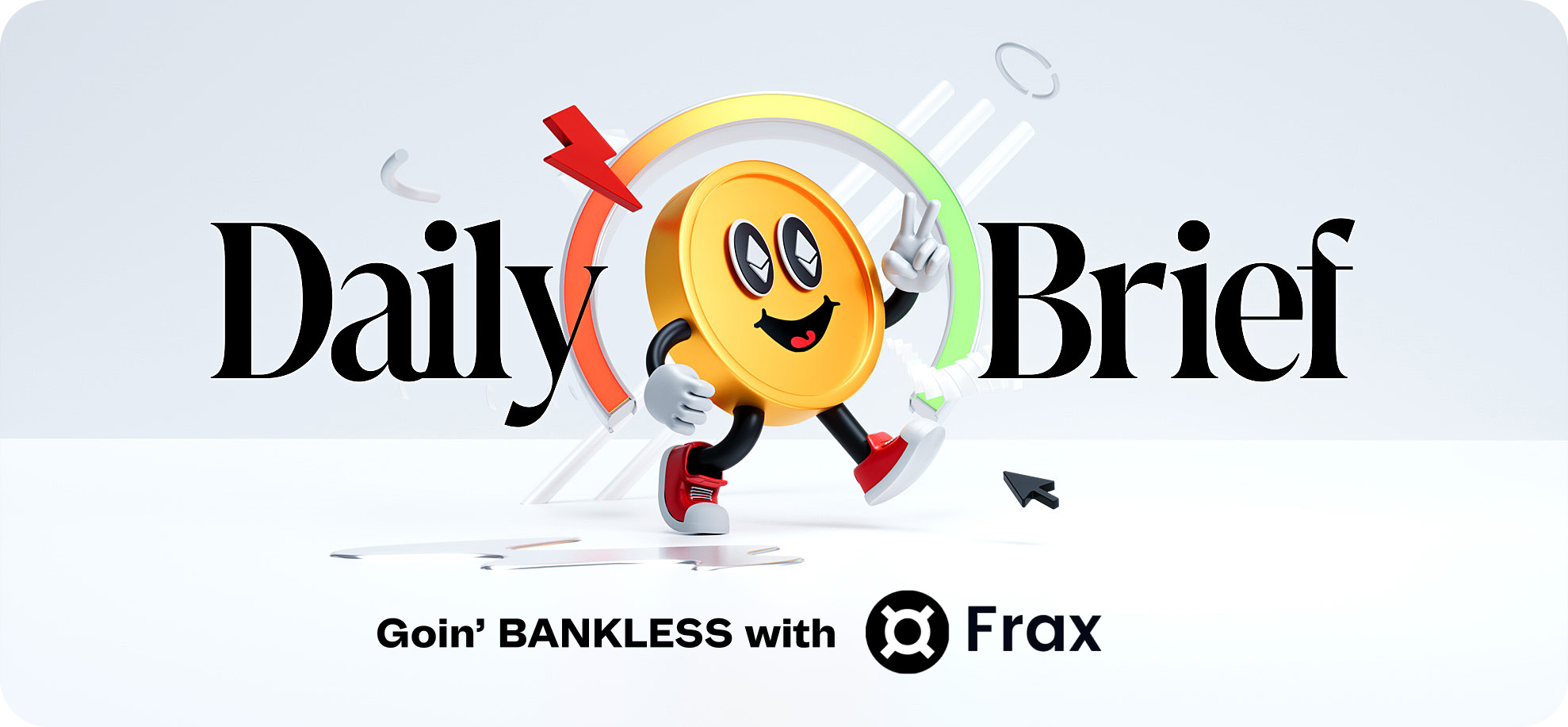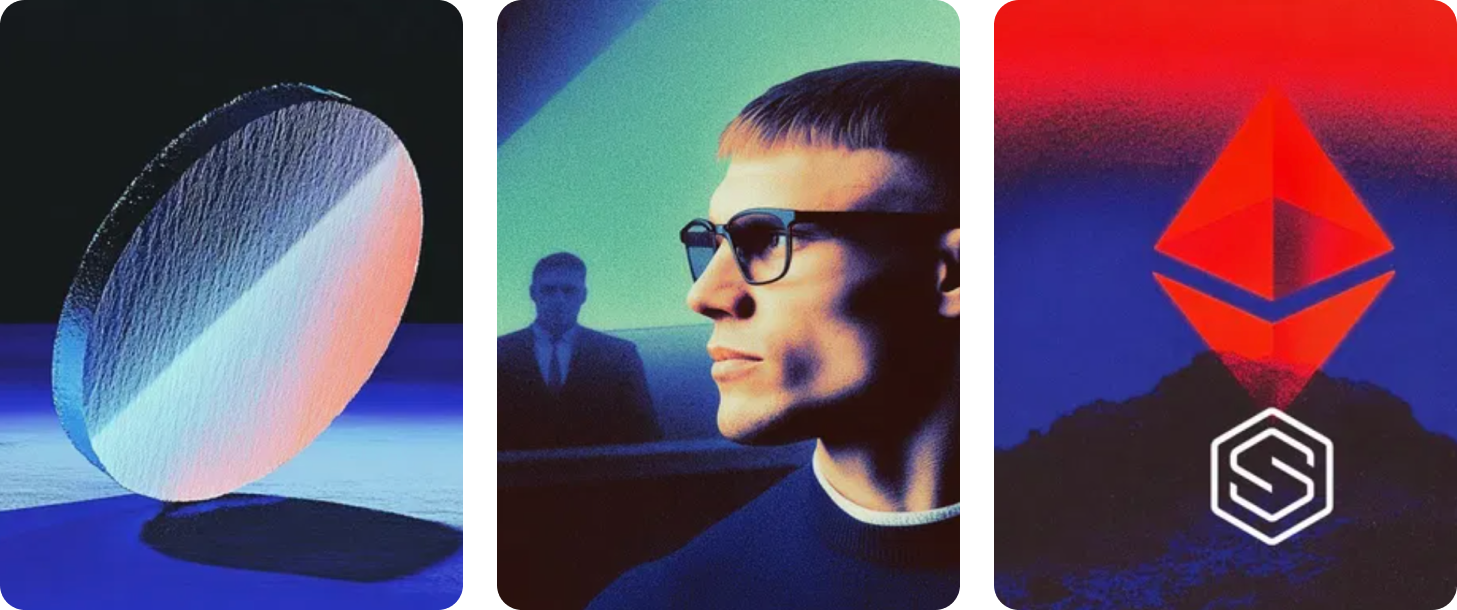ETH Is Still Money


View in Browser
Sponsor: Frax — Fraxtal Ecosystem: Where DeFi Meets AI.

- 🔵 Coinbase Reaches $100B Market Cap. 'Crypto Week' rally pushes public exchange into elite market-cap club.
- 🌩️ Tornado Cash Dev Roman Storm's Trial Begins. Crypto's biggest privacy battle heats up as Storm faces accusations in a Manhattan courtroom.
- 💪 SharpLink's ETH Holdings Surpass Ethereum Foundation's. The public gaming company is now host to the world's largest ETH treasury.
| Prices as of 6pm ET | 24hr | 7d |

|
Crypto $3.71T | ↘ 1.2% | ↗ 10.4% |

|
BTC $117,330 | ↘ 2.4% | ↗ 7.7% |

|
ETH $3,075 | ↗ 2.0% | ↗ 17.8% |

Yesterday, The DeFi Report released its Q2 Ethereum analysis, revealing a network in transition.
While protocol revenue and onchain fee activity declined due to upgrades like Pectra and the growing usage of Layer 2s, the data also points to something more significant — Ethereum showing clear signs of evolving into a store of value (cue the Blue Money Gospel).
Check out today's livestream from Ryan and Michael breaking down the Q2 ETH report.
Here are five key takeaways from the report that frame ETH’s shift from utility token to monetary asset. 👇
1️⃣ Institutions Are Accumulating ETH!
Over the last quarter, ETH entered institutional balance sheets like never before. This accumulation came via two primary vectors: ETFs and corporate treasuries.
- ETH ETFs: Assets under management rose 20% quarter-over-quarter to 4.1M ETH, or 3.4% of total supply. This was the largest quarterly increase since ETF tracking began, with Fidelity's FETH leading inflows.
- Corporate Treasuries: ETH held in corporate treasuries surged 5,829% to 1.98M ETH. SharpLink Gaming added 216K ETH — including purchases directly from the Ethereum Foundation — while Bit Digital added 100,600 ETH. In total, 48 entities now hold ETH in their treasuries.
Tom Lee, chairman of Bitminer — the Bitcoin miner now using ETH as a treasury asset — told TBPN he sees ETH as a “stablecoin play,” and believes companies will stake ETH to have a stake in the network to operate their own stablecoins, adding another dimension to institutional ETH demand.
The DeFi Report sees this mirroring early Bitcoin adoption, where corporate treasuries and ETFs were key sources of net demand. These actors aren’t using ETH for gas or DeFi — they’re holding it as a macro asset, reducing circulating supply and reframing ETH as long-term value storage.
2️⃣ Capital Is Rotating Into ETH & Out of CEXs
Over the past quarter, ETH steadily exited liquid, tradeable environments and migrated toward passive, locked, or strategic holdings — a pattern consistent with store-of-value behavior.
- Moving Off Exchanges: ETH on centralized exchanges fell 7%. This ETH likely moved to cold storage, staking, or institutional custody — a claim supported by increases in percent staked.
- Less DeFi Use: ETH in smart contracts declined 4% to 43% of total supply. This suggests users pulled from DeFi — not to sell, but to restake, reallocate, or shift into ETFs.
As a result, circulating supply rose only 0.18% in Q2, showing that the market effectively absorbs new issuance despite the network returning to slight net inflation.
In monetary terms, this behavior resembles "dollar hoarding" during uncertain periods, says the DeFi Report, with users choosing to store value in ETH rather than actively transact or speculate with it.
3️⃣ Staking Growing as Passive Yield Source
Staking has become Ethereum's mechanism for framing ETH into a yield-bearing store-of-value asset, and its continued growth reflects long-term conviction in the asset.
- Staked ETH: Rose 4% to 35.6M ETH, or 29.5% of supply — a new all-time high. Despite lower fee revenue post-Pectra, staking still provided meaningful returns. Issuance rewards averaged 2,685 ETH/day, supporting a total yield of 3.22%.
- Validator Rewards Composition: 88% of validator rewards came from issuance, not transaction fees. This signals ETH’s role as a productive asset, offering baseline returns independent of onchain activity.
Overall, this positions ETH more like a yield-bearing treasury instrument than a speculative commodity. Staking seems to have clicked as the mechanism which transforms Ethereum from a transactional chain into a monetary network with native yield.
4️⃣ Monetary Dilution Has Returned
While ETH's net inflation might appear bearish, the DeFi Report argues it signals ETH’s structural maturity.
- Inflationary Issuance: ETH issuance rose 2% while ETH burned dropped 55%, pushing net dilution to 0.73% annualized — a one-year high.
- Onchain Efficiency Down: Real Onchain Yield dropped 28%; the cost to produce $1 of revenue rose 58%.
However, rather than this dynamic prompting selloffs, staking pools and ETFs continued to absorb ETH. Michael Debault, the DeFi Report’s founder, sees this as echoing early Bitcoin cycles, where holders accepted dilution through issuance as necessary for long-term security and network sustainability.
The fact that issuance generated 88% of validator rewards means Ethereum now acts like a monetary network with scheduled inflation and embedded yield — not unlike a central bank issuing bonds. The key insight: even with positive net issuance and weaker onchain economics, holders still treat ETH as a value-preserving asset. This behavior — holding through dilution — defines store-of-value assets.
5️⃣ Ethereum Base Layer = Settlement Layer
Ethereum's Layer 1 is shedding its role as a transactional engine and evolving into a capital base and final settlement layer — defining traits of monetary infrastructure.
- L2 Activity Surge: Layer 2 daily transactions exceeded L1 by 12.7x; active L2 addresses now outnumber L1 by 5x. L2s also host 5.7x more smart contracts with >500 daily interactions. L2 DeFi velocity now exceeds L1 by 7.5x.
- Capital Remains on L1: Despite this migration, Total Value Locked on L1 rose 33%. Real World Assets on Ethereum rose 48% QoQ to $7.5B, led by tokenized Treasuries (+58%) and Commodities (+24%).
The DeFi Report notes this resembles traditional systems, where secondary platforms handle volume, and base institutions finalize settlement. In Ethereum’s case, L2s do the activity; mainnet finalizes and secures, acting as “bulletproof blockspace.” ETH is the reserve asset anchoring this structure.
Overall, the Q2 ETH Report paints a clear picture of a shift occurring, from both retail as well as institutions, in how they understand the network’s native asset.
ETH is leaving trading venues and entering treasuries, ETFs, and staking contracts. Layer 2s are taking over execution while Ethereum consolidates capital and anchors real-world assets. Staking rewards are driven by issuance, not fees, echoing early-stage monetary systems.
All of these come together to frame ether as less of a utility token and more of a sovereign bond — yield-bearing, hoardable, and inseparable from the system it secures.

The Fraxtal ecosystem is expanding at lightning speed—this month’s biggest highlight is IQAI.com, the newest Agent Tokenization platform from IQ and Frax. IQ is building autonomous, intelligent, tokenized agents launching on Fraxtal in Q1. Empower on-chain agents with built-in wallets, tokenized ownership, and decentralized governance—all within a fast-growing Fraxtal ecosystem.
Not financial or tax advice. This newsletter is strictly educational and is not investment advice or a solicitation to buy or sell any assets or to make any financial decisions. This newsletter is not tax advice. Talk to your accountant. Do your own research.
Disclosure. From time-to-time I may add links in this newsletter to products I use. I may receive commission if you make a purchase through one of these links. Additionally, the Bankless writers hold crypto assets. See our investment disclosures here.